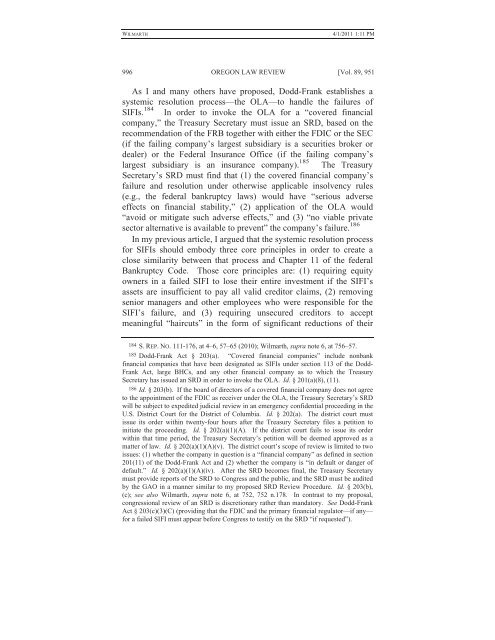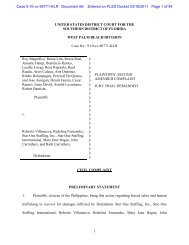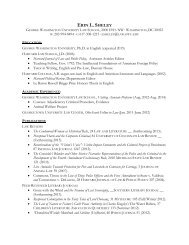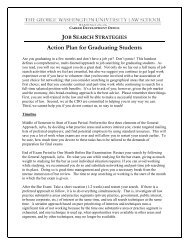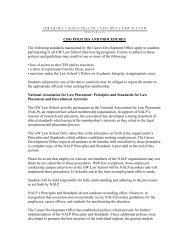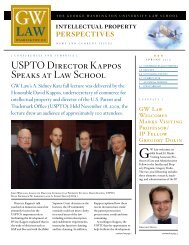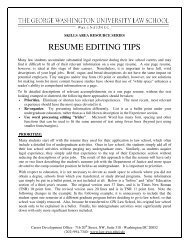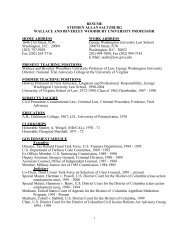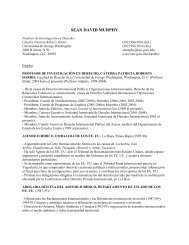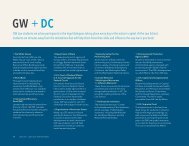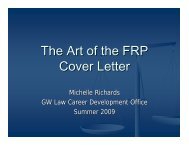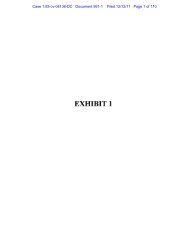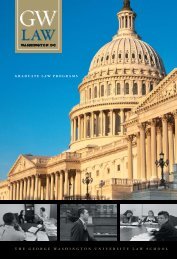CLE Materials for Panel #1 - George Washington University Law ...
CLE Materials for Panel #1 - George Washington University Law ...
CLE Materials for Panel #1 - George Washington University Law ...
You also want an ePaper? Increase the reach of your titles
YUMPU automatically turns print PDFs into web optimized ePapers that Google loves.
WILMARTH<br />
4/1/2011 1:11 PM<br />
996 OREGON LAW REVIEW [Vol. 89, 951<br />
As I and many others have proposed, Dodd-Frank establishes a<br />
systemic resolution process—the OLA—to handle the failures of<br />
SIFIs. 184 In order to invoke the OLA <strong>for</strong> a “covered financial<br />
company,” the Treasury Secretary must issue an SRD, based on the<br />
recommendation of the FRB together with either the FDIC or the SEC<br />
(if the failing company’s largest subsidiary is a securities broker or<br />
dealer) or the Federal Insurance Office (if the failing company’s<br />
largest subsidiary is an insurance company). 185 The Treasury<br />
Secretary’s SRD must find that (1) the covered financial company’s<br />
failure and resolution under otherwise applicable insolvency rules<br />
(e.g., the federal bankruptcy laws) would have “serious adverse<br />
effects on financial stability,” (2) application of the OLA would<br />
“avoid or mitigate such adverse effects,” and (3) “no viable private<br />
sector alternative is available to prevent” the company’s failure. 186<br />
In my previous article, I argued that the systemic resolution process<br />
<strong>for</strong> SIFIs should embody three core principles in order to create a<br />
close similarity between that process and Chapter 11 of the federal<br />
Bankruptcy Code. Those core principles are: (1) requiring equity<br />
owners in a failed SIFI to lose their entire investment if the SIFI’s<br />
assets are insufficient to pay all valid creditor claims, (2) removing<br />
senior managers and other employees who were responsible <strong>for</strong> the<br />
SIFI’s failure, and (3) requiring unsecured creditors to accept<br />
meaningful “haircuts” in the <strong>for</strong>m of significant reductions of their<br />
184 S. REP.NO. 111-176, at 4–6, 57–65 (2010); Wilmarth, supra note 6, at 756–57.<br />
185 Dodd-Frank Act § 203(a). “Covered financial companies” include nonbank<br />
financial companies that have been designated as SIFIs under section 113 of the Dodd-<br />
Frank Act, large BHCs, and any other financial company as to which the Treasury<br />
Secretary has issued an SRD in order to invoke the OLA. Id. § 201(a)(8), (11).<br />
186 Id. § 203(b). If the board of directors of a covered financial company does not agree<br />
to the appointment of the FDIC as receiver under the OLA, the Treasury Secretary’s SRD<br />
will be subject to expedited judicial review in an emergency confidential proceeding in the<br />
U.S. District Court <strong>for</strong> the District of Columbia. Id. § 202(a). The district court must<br />
issue its order within twenty-four hours after the Treasury Secretary files a petition to<br />
initiate the proceeding. Id. § 202(a)(1)(A). If the district court fails to issue its order<br />
within that time period, the Treasury Secretary’s petition will be deemed approved as a<br />
matter of law. Id. § 202(a)(1)(A)(v). The district court’s scope of review is limited to two<br />
issues: (1) whether the company in question is a “financial company” as defined in section<br />
201(11) of the Dodd-Frank Act and (2) whether the company is “in default or danger of<br />
default.” Id. § 202(a)(1)(A)(iv). After the SRD becomes final, the Treasury Secretary<br />
must provide reports of the SRD to Congress and the public, and the SRD must be audited<br />
by the GAO in a manner similar to my proposed SRD Review Procedure. Id. § 203(b),<br />
(c); see also Wilmarth, supra note 6, at 752, 752 n.178. In contrast to my proposal,<br />
congressional review of an SRD is discretionary rather than mandatory. See Dodd-Frank<br />
Act § 203(c)(3)(C) (providing that the FDIC and the primary financial regulator—if any—<br />
<strong>for</strong> a failed SIFI must appear be<strong>for</strong>e Congress to testify on the SRD “if requested”).


